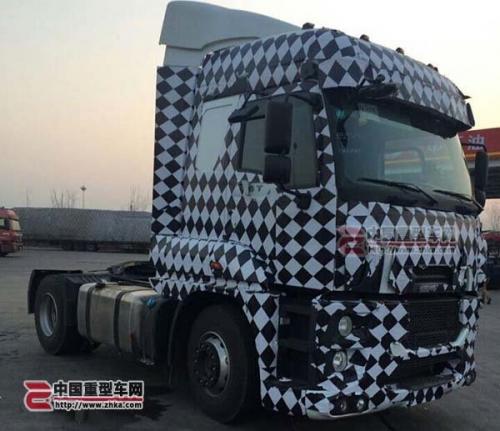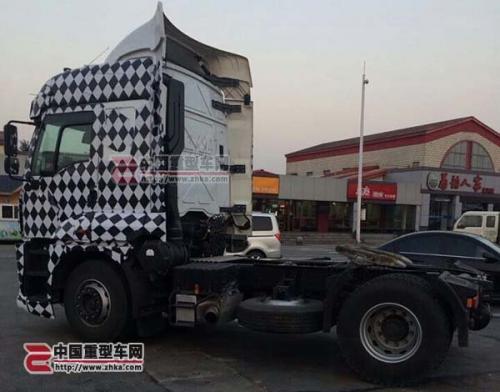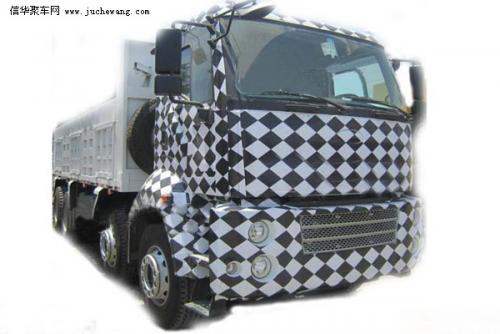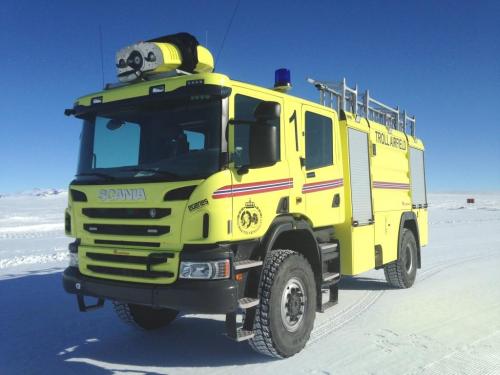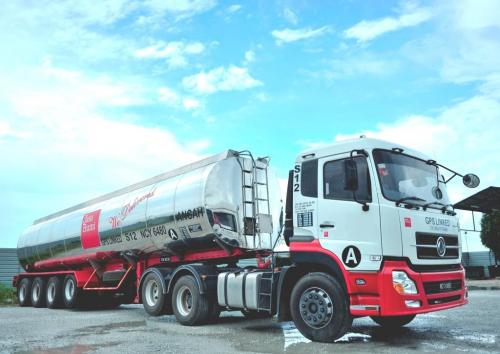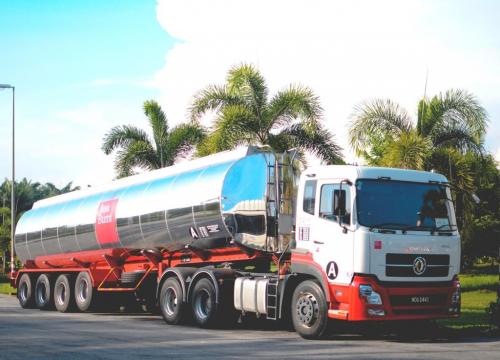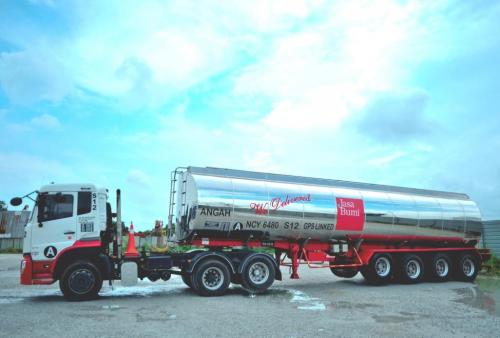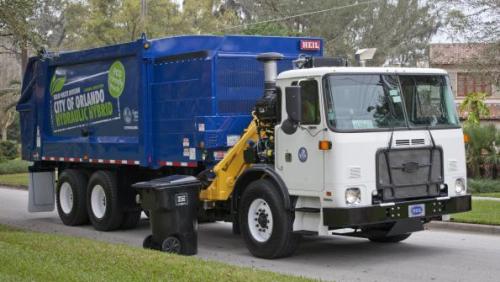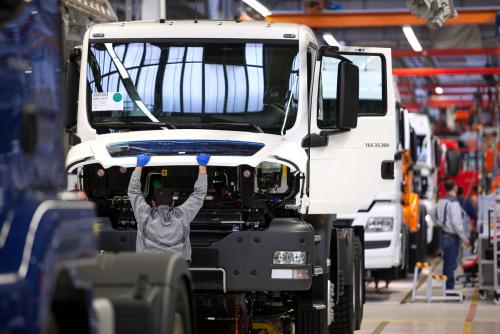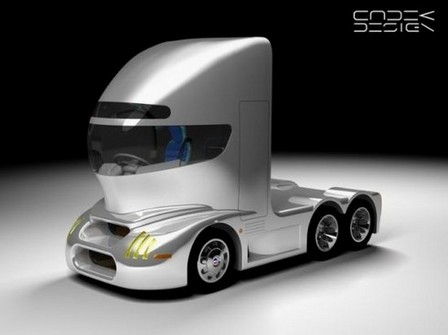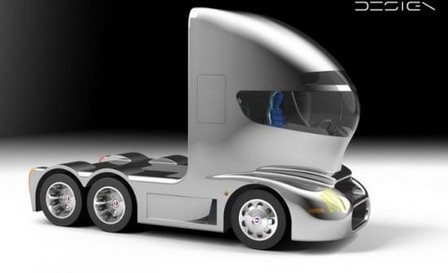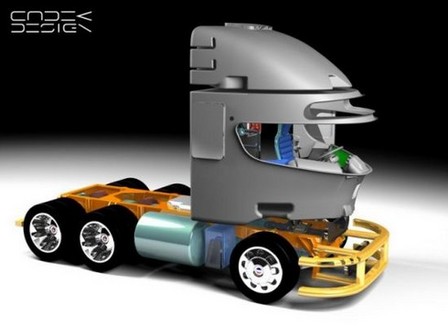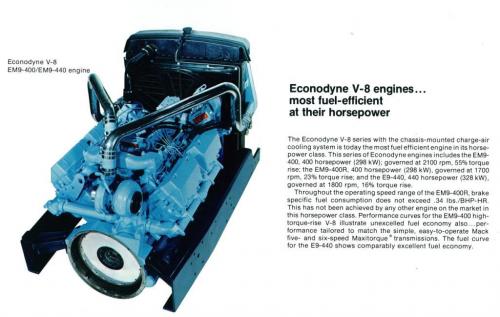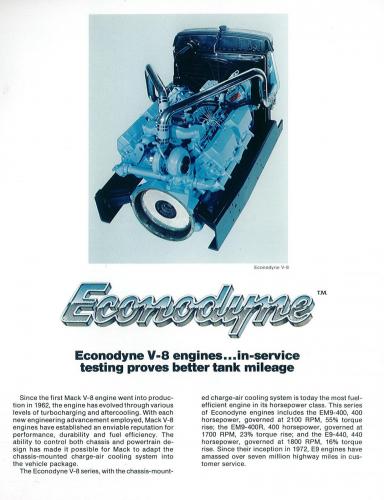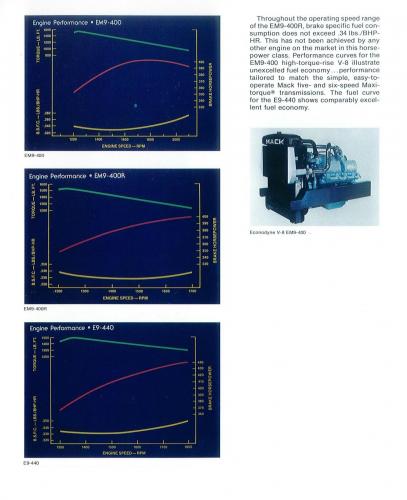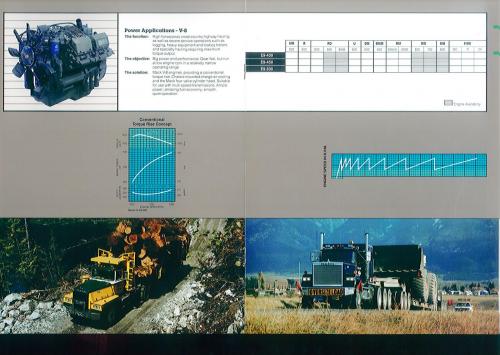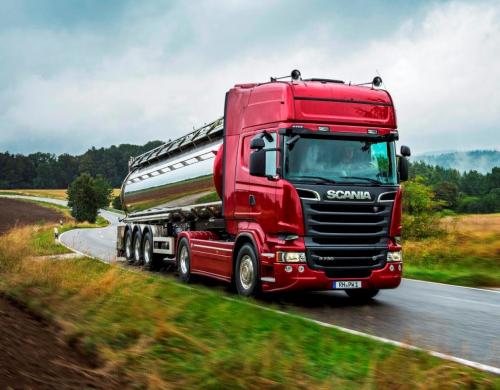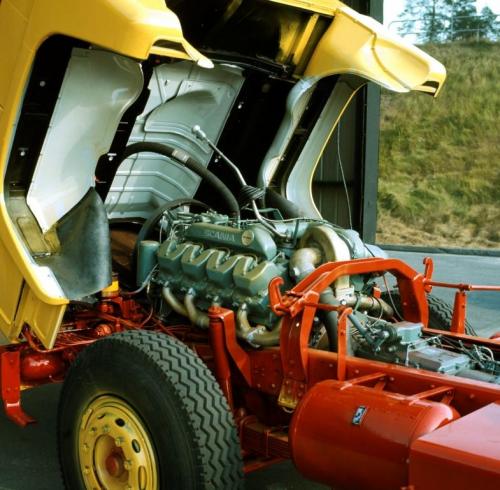
kscarbel2
Moderator-
Posts
18,539 -
Joined
-
Days Won
112
Content Type
Profiles
Forums
Gallery
Events
Blogs
BMT Wiki
Collections
Store
Everything posted by kscarbel2
-
Related Reading Lawsuits allege Navistar execs violated SEC, state laws Commercial Carrier Journal (CCJ) / April 9, 2015 The recent lawsuits brought against truck and engine manufacturer Navistar International Corp. allege that former Navistar CEO Dan Ustian and current CFO Andrew Cederoth violated provisions of the Securities Exchange Act of 1934, along with a few state laws, says a report on CCJ sister site Successful Dealer, who spoke with attorney Willie Briscoe — one of the attorneys bringing claims against the company. As reported Monday, the multiple class action suits brought against Navistar are on behalf of shareholders who bought Navistar common stock between Nov. 3, 2010, and Aug. 1, 2012. One case in particular is being filed on behalf of Construction Workers Pension Trust Fund Lake-County and Vicinity — and others like them — who bought 6,709 shares of Navistar stock in the time period for $246,000 and sold them for $165,000 when the company’s stock tanked in the wake of discontinuing its MaxxForce 15 engine and dropping EGR-based emissions tech in favor of SCR engines equipped with Cummins aftertreatment systems. According to the lawsuits, Ustian and Cederoth both sold their personal shares of the company’s stock when it was at record highs. Ustian sold 55,000 shares for nearly $3.9 million, and Cederoth sold 9,500 shares for $642,962. As Monday’s report notes, the lawsuits allege Navistar artificially inflated its stock price by withholding information from shareholders — such as that its engines were not meeting EPA standards — and misleading shareholders as to where the company was headed financially.
-
Related Reading Court consolidates suits against Navistar’s MaxxForce engines, transfers them to Illinois Commercial Carrier Journal (CCJ) / December 22, 2015 Per a request made in October, Navistar International has been granted its motion to consolidate the more than two dozen lawsuits against it and its EGR-only engines, and proceedings in the bundled suits has been transferred to the Northern District of Illinois. Fourteen lawsuits were consolidated under the ruling, made Dec. 17 by a five-judge panel on multidistrict litigation. All 14 suits, the panel rules, involve “common questions of fact” and that the Illinois district “will serve the convenience of the parties and witnesses and promote the just and efficient conduct of the litigation.” The suits against Navistar allege that the truck and engine maker knew that its 2008-2013 model MaxxForce engines had defects, yet the company concealed those defects form buyers and knowingly sold and marketed the products as otherwise, the suits allege. In a filing Oct. 3, Navistar asked the court to consolidate the suits and transfer them to Illinois, where Navistar is located. The company said then that it was facing 15 lawsuits in eight federal districts and 11 suits in state courts. It also said it had received notices of intent to sue from 21 other parties. The consolidation order issued last week only mentions the 15 federal suits. The one case not consolidated with the other — a suit brought by Alabama-based Ross Neely Systems — has “reached an advanced state,” the court concludes, and the trial is scheduled to begin in February. Its inclusion in the centralization of the cases “will unnecessarily delay the resolution of that action,” the panel wrote in its order.
-
Commercial Carrier Journal (CCJ) / March 18, 2015 The Securities and Exchange Commission filed in December a lawsuit against Navistar International Corp. claiming the truck and engine maker improperly redacted and withheld documents the Commission attempted to subpoena. The subpoenas are part of an SEC investigation into whether Navistar violated federal securities laws “by making false or misleading statements or material omissions” regarding its ability to obtain EPA emissions certification on its MaxxForce engine line, according to court documents filed in January. Though Navistar has released thousands of documents so far, it has either redacted or withheld thousands of others, the SEC claims in its filings. Navistar says the documents fall under attorney-client privilege and therefore are protected from subpoena. The SEC, however, says many of the documents are not protected by attorney-client privilege and therefore should be produced. Its lawsuit against the company asks the U.S. District Court in Illinois that’s handling the case to conduct an in-camera (private) review of the documents to determine whether Navistar’s claims are valid. If invalid, the SEC says, the court should order Navistar to produce the documents unredacted. Navistar has been facing legal heat in recent years over its 2010-2012 attempts to meet federal emissions standards via EGR only. All other truck makers opted to use the SCR exhaust aftertreatment-based method. In addition to the SEC investigation, the company has been sued by dozens of trucking companies alleging it knew that its 2008-2013 model MaxxForce engines had defects. Those defects, the lawsuits allege, were concealed from buyers. Navistar, meanwhile, marketed the engines as more reliable than competitors, the lawsuits claim. A federal judge consolidated all of those lawsuits in December. Navistar has also been sued by investors who claim Navistar and former executives Dan Ustian (former CEO) and Andrew Cederoth (former CFO) artificially inflated stock prices by withholding information from shareholders and misleading them as to the company’s financial outlook. Those suits were filed in spring 2013.
-
At the price sensitive bottom end of the Brazilian Cargo range, the C816 and C1119 still use the old Cargo cab. But the rest use variants of the current Global Cargo cab. http://www.fordcaminhoes.com.br/cargo/
-
FYI: Ford is now acknowledging in its spec sheets that the 10.3-liter engine is sourced from FPT (Fiat Powertrain Technologies). http://www.fordtrucks.ee/pdf/tehnilised-andmed-sadulveok.pdf
-
March 15, 2015 Right on schedule, Ford is actively road testing pre-production 460 horsepower Cargo 1846T on-road tractors as well as vocational models in China. However, it's odd that no 6x4 or 6x2 tractors have been sighted, given that the 4x2 tractor in the China market has taken a back seat to 6x4s and 6x2s. Ford Otosan does not produce a 6x4 tractor (4x2 tractors are more common in Western Europe, while 6x4 tractors see strong sales in Eastern Europe and the Middle East). The truckmaker does offer a Meritor MT32-610 planetary hub reduction drive axle bogie for 6x4 and 8x4 vocational chassis, but rated at 32 metric tons (70,548lb), that would be too heavy for the mainstream over-the-road segment (http://www.meritor.com/customer/europe/literature/PDF/English/product_brochures/MT-32-610%200908%20neu_s.pdf). Ford Brasil produces an Otosan-designed 6x2 tractor, however it has a liftable tag. The China market uses 6x2 twin-steer tractors (a configuration nicknamed "Chinese 6" when popular for many years in the UK - http://www.bigmacktrucks.com/index.php?/topic/31959-the-american-chinese-six/). (To be clear, Ford Otosan produces a wide range of 6x2 and 8x2 rigid truck configurations for both distribution and vocational). Ford has not announced when heavy truck production will begin at the JMC-Ford joint venture, but one can assume 2016. Any later than that and a next generation Ford Cargo will be required to have a chance for success in China's rapidly developing heavy truck market. Related reading: http://www.bigmacktrucks.com/index.php?/topic/38795-fords-china-heavy-truck-joint-venture-plans-take-off-in-2016/?hl=cargo http://www.bigmacktrucks.com/index.php?/topic/34938-the-global-market-ford-cargo-heavy-tractor/?hl=1846t http://www.bigmacktrucks.com/index.php?/topic/37456-update-on-fords-expansion-into-chinas-heavy-truck-market/?hl=jmch .
-
Scania Press Release / March 17, 2015 Having journeyed 15,000 kilometres over the ocean and then another 250 kilometres over Antarctica’s kilometre-thick glacial ice by sledge, the world’s most southerly Scania fire truck has arrived at its new home. The lemon-yellow fire truck will go into service and spend the winter at the Norwegian Polar Institute’s Troll research station. The station is located in Queen Maud Land, an Antarctic territory subject to some of the planet’s most extreme weather conditions, with wind speeds of up to 60 metres per second and temperatures approaching minus 60 degrees Celsius. Maintaining the ice The vehicle’s primary mission is not to extinguish fires, although this kind of duty isn’t as absurd as it first sounds, given the continent’s bitterly cold desert climate. Some 10 years ago, Troll Airfield was opened to aid the operation of the research station. This three kilometre long runway, built on top of the blue glacial ice, is open for transport planes during the Antarctic summer between November and February. Keeping the runway safe involves continual maintenance in the form of scraping and hosing down. Cracks in the ice must be filled with water, and this will now come from the water cannon on a Scania fire truck. Stein Asgeir Egenes is the Managing Director of Norway’s Egenes Brannteknikk, the company that equipped the Scania vehicle. “This fire truck has been adapted to cope with the low temperatures in Antarctica,” he says. “It’s equipped with a so-called ‘polar package’, including a diesel heater, which also protects the water- and foam-cannon on the roof against the cold.” Exciting journey Transporting this unique fire vehicle to the Troll station was a epic story in itself. The trip was carefully planned so that the truck’s arrival coincided with the Antarctic summer, the only time of the year when weather conditions allow for such a venture. After body building and equipment mounting work was completed on the Scania chassis in southern Norway, the vehicle was driven onto a Denmark-bound ferry. In the Danish town of Aalborg, it was then loaded onto the Mary Antarctica, a ship within the Royal Arctic Line’s polar-going fleet that once a year supplies Troll with equipment too large to be flown in to Troll Airfield during the summer. Pulled on a sledge After a 15,000 kilometre sea journey, the vessel docked alongside the Antarctic ice shelf where the world’s most southerly Scania fire truck was carefully lifted ashore. It was then loaded onto a specially built sledge and towed 250 kilometres over glacial ice by snowmobiles. Finally, it arrived at the Norwegian research station, located 1,270 metres above the Southern Ocean. The Troll research station is manned throughout the year. The area is subject to “mild Antarctic climate conditions”, meaning temperatures sit around zero degrees during the summer and could fall as low as minus 60 degrees during summer. Just six staff in winter During the winter months, the station is manned by six people, while during summer it is home to between 25 and 30 researchers. The station is used for conducting meteorological observations, measuring radiation, and for a range of research programs in fields such as glaciology, biology, and physics. The main building is about 300 square metres and contains eight sleeping quarters, a gym, a sauna, a large kitchen, a communications room and office space for everyone overwintering at Troll. A variety of separate buildings contain laboratories, generators and a garage, as well as an emergency evacuation area at a safe distance from the main building for use in the case of fire or other critical incidents. Safer working conditions Troll Airfield, the 3000-metre long landing strip that the Scania fire truck will keep open, is a part of the Queen Maud Land Air Network Project, a cooperative initiative involving 11 nations conducting research in the Queen Maud Land territory. The runway can only be used for scientific activities and must not be use for commercial purposes. The facility has made the work of Antarctica’s researchers both easier and less risky. Kai Johannessen is Principal Engineer, Operations and Logistics with the Norwegian Polar Institute. “The fire truck will primarily be used on the Troll station’s airfield,” he says. “In addition to this, it will be used as a conventional fire truck for the research station, although it will only be in service during the summer season. During the winter season from February until November, it will be drained of fluids to prevent ice damage.” With the nearest service facility in South Africa 4,500 kilometres to the north and the landing strip only open for a few short summer months, the potential for getting in spare parts in extremely limited. For this reason staff at Troll have several years’ supply of spare parts in stock on-site – both for the Scania chassis and the built-on equipment. “Our summer team at Troll have received training in managing and servicing the fire truck, and they will in turn train the winter team when they take over,” says Johannessen. The world’s most southerly Scania fire truck Chassis: Scania P550CB 4×4 550hp Bodywork: Rosenbauer MBW (modular system) Water tank capacity: 5,600 litres Foam tank capacity: 400 litres Pump: Rosenbauer N55, 5,500 litre/min at 10 bar SnowCross winter tyres with studs for optimal grip on ice CAN-bus digital service- and control system. Five facts about Antarctica Antarctica is the world’s coldest, driest and most windswept continent.98 percent of Antarctica is covered in ice, which on average is 1.6 kilometres thick.At the geographical South Pole, the ice is 2.8 km thick.Antarctica covers an area of 14.4 million square kilometres.The continent is home to 90 percent of the world’s fresh water – in the form of ice.Additional Images: http://newsroom.scania.com/en-group/2015/03/17/a-fire-truck-in-antarctica/ .
-
Europe is far ahead of the US market in aerodynamic trailer development. http://www.donbur.co.uk/eng/products/aerodynamic_teardrop_trailers_rigids.php
-
Fleet Owner / March 17, 2015 Trailer makers are beginning to deploy more and more enhanced aerodynamic options for their products to help motor carriers beef up fuel economy – improvements that, though largely limited to dry van units for now, truck OEMs believe are critical to furthering the fuel saving footprint of tractor-trailers in the near future. “It’s not all about the vehicle; it’s the combination of the truck and trailer. To reach full potential for fuel economy, you need to treat the trailer equally,” Ken Damon, manager of vehicle performance for Peterbilt Motors Co., explained to Fleet Owner. “OEMs can do everything possible to the tractor to improve fuel economy, but you will plateau if you don’t also work on the trailer,” he added. Mary Aufdemberg, director of product marketing at Freightliner Trucks, stressed that it’s when the aerodynamic profiles of both a highway tractor and trailer are combined that fuel savings opportunities can be truly maximized. “The tractor must have an aerodynamic shape and include items such as an aero bumper, hood-to-bumper fill, internal antennas, chassis side fairings, side extenders and wheel covers,” she told Fleet Owner. “Trailer aero enhancements must include trailer skirts and could benefit by a trailer tail, nose cone and wheel covers. The trailer gap – i.e., the distance between back of cab and front of trailer – should not exceed 48 inches,” Aufdemberg added. To that end, Wabash National Corp. showed off a number of aerodynamic options at the recent Technology & Maintenance Council (TMC) annual meeting designed to boost the fuel efficiency profile of its dry van trailer models. The OEM’s new Ventix DRS drag reduction system uses a new patent-pending “segmented” design that aims to improve air flow management across the entire length of the trailer, eliminating drag points. Brian Bauman, VP and GM of Wabash Composites, added that that SAE J1252 wind tunnel test comparisons indicated the segmented design of the Ventix DRS system can boost fuel savings by 50% when compared to traditional trailer side skirts when used as a stand-alone device. Wabash is also offering a new aerodynamic “tail” device for its dry van models dubbed the AeroFin to help better manage airflow across the rear of the trailer to reduce aerodynamic drag. The company has also made improvements to its more traditional six year old AeroSkirt trailer side skirt package, Bauman noted. The update package, called the AeroSkirt CX, can provide up to 6% in fuel economy improvements while weighing 25% less than the previous AeroSkirt package. “When used in combination with low rolling resistance tires, these devices can improve fuel economy by more than 10%,” he added. “We’re driving fuel savings to new levels to help reduce fleet fuel consumption, operating costs and greenhouse gas emissions.” Even smaller trailers typically deployed in LTL operations are being offered with aerodynamic upgrade options. Great Dane Trailers, for example, showed off a 28-ft. Champion SE dry van unit it built for Southeastern Freight Lines at the TMC show that featured “Green Wing” aerodynamic side skirts and a Meritor PSI automatic tire inflation system to help improve its fuel savings potential. Strick Trailers also showed off one of its aerodynamic dry van trailer packages at the TMC show dubbed the “NexGen 2.0” model. It comes equipped with Laydon TS225 “wishbone” side skirts that offer up to a 5% fuel savings combined with a nosecone air deflector pegged to boost fuel economy by 1% to 3%. Dale Ballard, Strick’s regional sales director, told Fleet Owner that redesigned door hinges, a re-sloping of the trailer roof, use of lightweight Jost AX100 landing gear, all help boost the NexGen 2.0’s model fuel saving footprint. “It’s the combination of all of those things – even changes to the shape of rear underride guard and to the mud flaps – that add up to larger fuel savings,” he explained. Photographs: http://fleetowner.com/equipment/tackling-aerodynamics-trailers#slide-0-field_images-154071
-
Heavy Duty Trucking / March 17, 2015 Goodyear announced to its dealers at its 2015 Goodyear Dealer Meeting in Grapevine, Texas that its new goal is to be the leader in fuel-efficient truck tires. One company executive said Michelin is the target. Goodyear's new Fuel Max LHS steer tire joins the Fuel Max LHD in the lineup. It is available in four Load Range G and H sizes: 11R22.5, 11R24.5, 295/75R22.5 and 285/75R24.5. A precure retread pattern that complements the Fuel Max LHD also was introduced. A Fuel Max trailer tire, the LHT, will be available in the fourth quarter, as will the RSA regional all-position tire. The move away from number nomenclature is calculated, according to Brian Buckham, general manager of commercial product, marketing and future innovation. “We're trying to simplify the naming process."
-
Industry Voices: What trucking can learn from the airlines
kscarbel2 posted a topic in Trucking News
Jim Park - Today's Trucking / March 17, 2015 For-hire trucking could learn a few things from the airlines, because they have finally figured out how to make money in a deregulated environment. Love 'em or hate 'em, commercial airlines are the most time- and cost-effective way -- even comfortable if you compare an Airbus A320 to a cattle truck -- of moving people back and forth across the country. While passengers may be unhappy with being nickeled-and-dimed to death, they are paying the endless list of fees and surcharges, and the airlines are racking up record revenue increases. The Associated Press reports that U.S.-based airlines hauled in $3.4 billion in baggage fees in 2010, a 24-percent increase over 2009. By the end of the third quarter 2011, 17 major U.S. airlines had collected $2.6 billion for checking luggage. Not bad for something that used to be free. Rather than face an uprising over fare increases, the airlines downloaded the problem to the passengers, who must now duke it out in the cabin to see who gets their humongous suitcase into the overhead luggage bin first. The airlines are actually a great example of how to recover otherwise lost revenue by tacking on fees and surcharges where they are warranted. Want a beer? Seven bucks. A sandwich? Eight bucks. You won't get a free lunch anywhere else, so why should you expect one on an airplane? The airlines use a complex pricing system called "yield management," which is rather concisely defined by Wikipedia, as the process of understanding, anticipating and influencing consumer behavior in order to maximize yield or profits from a fixed, perishable resource (such as airline seats or hotel room reservations). The term was coined by Robert Crandall, former chairman and CEO of American Airlines, who called it, "the single most important technical development in transportation management since we entered deregulation." Back in the days when the Interstate Commerce Commission actually enforced tariffs, trucking had the luxury of charging customers based on a menu of service offerings. Today, flat-rate pricing is the norm -- especially when dealing with freight brokers -- and that limits our ability to charge for certain services, or to recovers costs incurred in providing such services. You Want it When?I'll grant that there are differences between an aircraft in scheduled service leaving the gate with unsold seats -- that's lost revenue -- and a truck running down the road for an agreed-to flat rate. But when you consider all we do that's above and beyond getting freight from one loading dock to another, I think we're leaving a lot of money on the table too. There are the obvious examples such as inadequate fuel surcharges and unbilled detention time, but what about things like cancelled loads, deliveries to remote destinations, day-of-the-week or time-of-day load/unload premiums? You know delivering in Los Angeles on a Friday means a weekend layover. How might you convince your customer to load a few days early so you can deliver on Wednesday? Charging a premium for delivering on a day, or time of day, that limits your reloading potential would be a good way of influencing the customer's decision. Ever had a load cancelled once the truck is en-route to the pick up? The driver has begun his or her workday and has started the 14-hour duty cycle. Diverting or sitting that truck is going to cost the driver and the carrier something. Why shouldn't the customer pay for its lack of foresight? Weight is another big issue. In the truckload world, a load is a load. A to B = X dollars. If you're dragging a van around, it doesn't matter how many boxes are stuffed into the trailer, what matters to the carrier is weight. How many carriers (and brokers, for that matter) charge a flat rate for a truckload whether the weight is 10,000 pounds or 50,000? Weight sure matters to the guy paying for the fuel. The customer should pay accordingly. Tons of other extras spring quickly to mind that carriers could and should be billing for, such as driver load or unload, special handling, destinations where reloads are difficult, scheduled appointments, team service, temperature-controlled service, multiple-drop, re-consigned loads, weekend deliveries, residential deliveries, security fees, paperwork preparation, scale tickets ... The list of possibilities is a long one indeed. Many carriers are now charging what have come to be known as accessorial charges, but many are not. I hear carriers that do levy accessorial charges are having varying degrees of success at collecting those charges, but that's another story. My question is, why would you not charge extra fees for legitimate services? It apparently hasn't hurt the airlines. Shippers would still have choices if motor carriers were to charge for everything they do. Shippers that choose to move trucks in and out promptly would not have to pay delay fees. Shippers that insist on 3 a.m. delivery appointment should have to pay for the lost time between the delivery and a potential reload during normal business hours. Loads that deliver to out-of-the-way locations should pay a location charge to cover the deadhead miles back to civilization. We can offer our customers choices too. Pay me now, upfront, or pay me later when I've finished tallying up all the extra charges for things I had to do to get your load delivered. If trucking adopted the airline pricing model, I think $3.4 billion in recovered revenue would be drop in a bucket. There's a great description of Yield Management in this article on Wikipedia, if you care to dig a little deeper into the mechanics of this revenue preservation tool. -
CBT Online (Malaysia) / March 17, 2015 When your service is a common one – in this case, haulage and logistics – there are precious few ways to set yourself apart from the competition. What Jasa Bumi Logistics has done is to concentrate on doing the little things well. Part of the greater Jasa Bumi group of companies, Jasa Bumi Logistics is a relatively young company, founded early in 2014 to handle the transportation of palm oil in its many forms, such as crude palm oil (CPO) and palm fatty acid distillate (PFAD), to name but a few. Directors of Jasa Bumi Logistics Azmir Yahya and K.K. Ong both felt that there were areas in the logistics industry that left much to be desired, particularly in the upholding of quality and safety standards. Both agreed to use Dongfeng as the backbone of its transportation fleet; in fact Jasa Bumi Logistics’ fleet consists entirely of Dongfeng prime movers, currently 20 units strong and set to grow by another eight by the end of the month. “We are particular about quality,” says Ong, a sentiment echoed by his business partner Azmir. Ong adds that “cheaper is not necessarily worse”, because not only does Dongfeng undercut other makes on purchase price, but the trucks have also been found to be reliable and fuel efficient despite their relative affordabillity, according to the Jasa Bumi Logistics chief. Jasa Bumi Logistics is proud of its partnership with Dongfeng, displaying the truck manufacturer’s name on its trailer alongside that of its bodybuilder, Jithra, which constructs the gleamingly finished stainless steel tanks for Jasa Bumi Logistics. Of course, there is an element of perception behind the choice of finishing for the tankers. Where handling of food products is concerned, there will always be concerns for cleanliness, and here Ong likens his operation to the presentation of food itself: “It is like serving good, delicious soup with a good, clean ladle, rather than a dirty one,” says Ong. On that front, Jasa Bumi Logistics claims to be the first in the Malaysian food products transportation industry to use stainless steel tankers, where others have traditionally used mild steel tankers. The shiny facade seems to have drawn positive attention; Ong says some of the general public come up to the trucks at rest stops out of sheer curiousity, and there was once a representative of global procurement from one of Jasa Bumi’s customers who was so impressed with the trucks, she asked to have a group photo taken with the shiny tanker. There is also another innovation from Jasa Bumi Logistics, which was hitherto only seen on petroleum transporters – the hand rail-equipped tank. The hand rails deploy remotely at a push of a button, giving the truck personnel a steadfast grasp in addition to the safety harnesses used when checking of tanks is required. “Even if the harnesses are unavailable, our staff will still have some security from the hand rails,” adds Ong. Jasa Bumi Logistics’ staff charged with driving the prime movers are not merely called drivers. Ong says: “We call them pilots, and that gives them greater pride in their occupation.” His “pilots” are each given a familiarisation course at a Dongfeng centre before commencing driver duties with his company, to ensure optimal operation of the trucks. Ong wraps it up by saying that “if you don’t take care of your people, your people can’t take care of your company.” In the immediate future, Azmir and Ong aim to make Jasa Bumi Logistics the market leader in palm oil product transportation. Further ahead beyond the horizon, the duo plan to venture into transporting petroleum, which they are confident of doing because they are certain that their standards of practice have set them in the right direction. .
-
Fleet Owner / March 16, 2015 Over five years ago, when Mayor Buddy Dyer launched Green Works Orlando, his vision of an environmentally friendly community encompassed almost every aspect of life in the Central Florida city and its surrounding area. Taking up the challenge along with other city departments was the Fleet & Facilities Management Division. Daryl Greenlee, Orlando’s fleet manager, oversees an operation with 2,500 vehicles and pieces of equipment used by city departments. The division provides maintenance, repairs and replacement of trucks, police cars, fire apparatus, and a fleet of 79 front-line and 12 reserve solid-waste refuse units. “Over the next three years, all of our residential garbage trucks will be converted to hydraulic hybrid models,” Greenlee relates. “We’re in the process of replacing 30 residential refuse trucks with Autocar E3 models powered by Parker hybrid drive systems and fitted with Heil automatic side loader bodies. We’ve had nine of these units on the road for just over 18 months and nine more are scheduled to be delivered.” Supplied by Kenworth of Central Florida, the trucks feature the Parker RunWise Advanced Series hybrid drive systems along with a Cummins ISL9 engine, a proprietary power drive unit (PDU), hydraulic pump/motors, and composite bladder accumulators. Energy recovered from the vehicle’s braking system is stored and used to power the truck each time it accelerates. As the truck approaches highway speed, the PDU transfers from hydrostatic drive to mechanical drive, maximizing operating efficiency. “While the initial cost of the hydraulic hybrids is higher than that for traditional diesel-powered units, the premium is easily justified,” Greenlee says. “In our fleet, the Autocar E3s using the Parker RunWise hybrid system have been using up to 50% less fuel than our diesel units, which we’ve verified with telematics. Not only is that a substantial savings in fuel costs, the truck’s emissions are significantly reduced. “Some of the savings we’re realizing are also coming from lower maintenance costs,” Greenlee continues. “On our diesel trucks, we perform three or four complete brake jobs every year. At $3,000 each, that’s at least $90,000 over a 10-year service life. With the hydraulic hybrids, which use brake energy recovery to slow the vehicle, we’re projecting that we won’t need to replace any brakes until year 10.” Other savings contributing to the return on investment are longer service intervals, facilitated by having smaller engines to power the hydraulic hybrid system, and the elimination of a transmission. Additionally, with smoother deceleration, tire life appears to be better, lowering tire costs. No steer tires have been replaced on the Autocar E3s, Greenlee reports. Also, the majority of the hybrid trucks are only on their second set of drive tires, as compared to as many as three sets on the diesel units. There are productivity improvements as well. “After the initial deployment, we discovered that some routes using hydraulic hybrids are faster by an hour,” says Greenlee. “We actually had supervisors follow those trucks to see why and soon realized the faster times were due to the quicker acceleration with the hybrid systems. That can translate into longer routes with fewer trucks and the ability to serve new neighborhoods without increasing fleet size.” Green Works Orlando is a vision to transform the fifth largest city in Florida into one of the most environmentally friendly communities in the nation. And the city’s Fleet & Facilities Management Div. is fielding refuse vehicles that can help achieve that goal at the lowest possible cost. .
-
Renschler says VW Trucks Must Be Present in US to Be Global Player
kscarbel2 replied to kscarbel2's topic in Trucking News
VW Group only last May finally gained control of Scania. So I suggest you're judgement is premature. The leadership at VW are car people. But they realize that, and hired Renschler away from M-B, who's a real truck guy. -
Front steering hubs and wheel bearings -- what to do?
kscarbel2 replied to kscarbel2's topic in Trucking News
In the US market, Volvo Group's namesake and Mack brands are the only ones still pushing unitized hubs. I don't care for them. Oil-lubricated ConMet hubs are the way to go (http://www.conmet.com/products/hubs/). FYI - ConMet (Consolidated Metals Co) started out in 1964 as the Portland-based aluminum foundry subsidiary of Consolidated Freightways, producing the company's aluminum truck components. -
Fleet Owner / March 13, 2015 Over the last 10 years technology has struck in ever facet of our world from computers to electronic paper towel dispensers in the restrooms. I say give me back the lever, two pushes and I have enough paper. And I cannot stand the horizontal blow dryers. In effort to speed up assembly in the automotive world, they designed front hubs that are unitized for quick assembly. Lucky people who buy a new car may never really feel the pain of a front hub failure on their car. For some reason though, I have bad luck with right-side hubs failing. Not really the hub failing, but the wheel bearing, and normally it shows up as a ABS light indicator. I have had five such failures. In the past when a wheel bearing was making a noise is was simple to replace the $20 wheel bearings on a Saturday morning. It’s not quite so simple today, as we have traded quick assembly for easy wham, bam, done wheel bearing adjustments. Today the average price of a hub on a car is close to $300 and it’s a nightmare to change. No more Saturday morning, but rather all-day Saturday providing you have the right tools. So it’s back to the dealer, and two front hubs on a car are close to $1,200. Unitized hubs have now made the transition to our worlds of trucks for all of the same reason as above. They tend to last longer in miles because the bearings are larger and carry heavier load, but when we have one that fails the hub assembly is expensive. A good friend and a peer of mine talk every Sunday morning about maintenance issues as a way of communication and challenging each other with issues of the week. Front hubs became a huge topic of discussion because he recently experience two failures with no warning and I have had some unitized hubs fail with no warning as low as 20,000 miles in 20,000-lb. axles and 150,000 miles in 12 and 14,000-lb. axles. Oil hubs, on the other hand, did give us early signs. Failing is probably not be the right term as most of us understand that all parts have a predetermine life. What we wanted to figure out was why they were not delivering the life that we expected. In questioning the manufacturers, they told us that the hub has to be service from time to time. But with a unitized hub, I am not sure what servicing means except replacement. At the recent TMC meeting in Nashville I ask the question about whether shops jack up the front end of the vehicle to lubricate the components (I was really asking about checking front wheel bearings). More than half said they follow the manufacturers’ recommendation, which today is not to jack up the front end. When I asked how they check front wheel bearings then, the crowd was mostly silent, which means most do not know, some do not care, and some just wait for a failure to occur. One fleet said they checked during their annual inspections, which occur at about 120,000 miles. It was clear that most do not believe they have any failures, or at least not enough to look into their maintenance program. I do not believe a yearly inspection of front wheel bearings is enough and early detection from a leaky wheel seal is not a telltale any more with unitized hubs. My friend keeps his trucks a million miles, so we jointly decided that somewhere after 600,000 miles the hubs have to be changed on all of the trucks. That’s about $1,000 each. Of course you could wait, but why? Based on our experiences with unitized hubs, here are few suggestions for your PM Sheet: Raise the front end at each PM to lube font end components.Rotate, listen, feel for early signs of potential wheel bearing each PM.Remove the cap periodically for visual lube inspection.Lower the front end and lube as well.Determine when to change the unitized hub on a planned basis.Accept that the new hubs are much different than the old oil-lubed wheel bearings.Stay with oil front hubs if there is a choice for million mile trucks.Before we could spend $100 for new wheel bearings when they were close to the end of their life, but we now are in the dark as failures occur with no early signs. Now we’re talking about predicting failure, not something that I subscribe to except for unitized hubs on front steer axles. Determining the right mileage limit may seem difficult, until disaster strikes. This is a Maintenance Insurance decision; put it on your PM SHEET!
-
Heavy Duty Trucking / March 13, 2015 Ford has begun offering a heavy payload package with its 2015 F-150 pickup that increases the payload and towing capabilities for fleet and other commercial users. The Heavy-Duty Payload Package increases the truck's payload and towing capabilities with an eight-foot cargo box, upgraded springs, tires, and wheels, as well as a heavier duty leaf supension. The package is available for the regular cab or extended cab (SuperCab) models equipped with the 5.0-liter V-8 or 3.5-liter EcoBoost V-6. The package increases the truck's GVWR to 7,600 pounds for the XL trim and 7,850 pounds for the XLT and Lariat trim models. The package is paired with the Max Trailer Tow Package on the EcoBoost and the Trailer Tow Package on the V-8. The Heavy-Duty Payload Package retails for $1,500. The package increases payload to 3,300 pounds for the V-8 and 2,900 pounds for the EcoBoost. Without the package, the EcoBoost truck has a maximum payload of 2,230 pounds. Trailering capability for a SuperCab with the EcoBoost would increase to 11,800 pounds from 10,700, said Mike Levine, Ford's truck communications manager. The upgrade is designed for commercial users in the construction, landscape, and automotive parts industries, Levine said. The heavy payload package includes five LT245/70R17E BSW A/T tires for the XL; five LT275/65R18C OWL A/T tires for the XLT or Lariat; 17-inch silver steel heavy-duty wheels for the XL; 18-inch silver aluminum heavy-duty wheels for the XLT or Lariat; upgraded springs and auxiliary transmission oil cooler; and a 9.75-inch gear set with 3.73 electronic-locking slip axle.
-
Renschler says VW Trucks Must Be Present in US to Be Global Player
kscarbel2 replied to kscarbel2's topic in Trucking News
Renschler's has just stated his plans rather clearly. One has to assume VW Group will purchase Navistar, as the acquisition of Paccar (DAF, Kenworth Peterbilt) would be rather costly, and European regulators would squawk over VW controlling three European truck makes. Further reading: http://www.bigmacktrucks.com/index.php?/topic/38784-new-vw-truck-division-head-evaluating-us-acquisition/?hl=volkswagen http://www.bigmacktrucks.com/index.php?/topic/36531-paccar-no-merger-talks-with-vw/?hl=volkswagen -
Wall Street Journal / March 12, 2015 Volkswagen AG needs to establish a strong truck business in the United States if it wants to be a global player, VW's new board member in charge of commercial vehicles told reporters on Thursday. Andreas Renschler was responding to speculation that VW's truck division could make a big acquisition in the U.S. in a bid to build the business. He said "to be a global player, you need to be in the U.S". Renschler didn't give any indication as to whether VW would make an acquisition to achieve that goal.
-
No, CVG stopped producing Navistar cabs in 2010. Navistar decided to insource the cab production that had taken place at CVG's Norwalk, Ohio plant to its own assembly facility in Escobedo, Mexico. The Norwalk plant was subsequently closed. Relating to what I mentioned above, the Norwalk plant for many years was a Sheller-Globe facility producing R, U and DM series cabs, which were shipped via rail on special cars to Allentown.
-
Bloomberg / March 11, 2015 MAN SE, Europe’s third-largest truck manufacturer, forecast “stable” earnings in 2015 as cost cutting offsets a recession in Brazil and slowing growth in China that’s hurting deliveries. Sales of commercial vehicles and power-engineering orders will be “slightly” below figures for 2014, the Munich-based division of German carmaker Volkswagen AG said Wednesday in its annual report. Orders fell 5 percent last year to 15.3 billion euros ($16.4 billion). MAN, which also makes buses as well as diesel engines for ships and power plants, scaled back its 2014 earnings forecast in October as stagnating economies in its home region and Brazil reduced orders, prompting the manufacturer to cut production. Parent company Volkswagen said last month that it can’t guarantee profit growth this year because of economic troubles in Russia and Brazil. “MAN sounded a cautious note in its outlook because truck demand remains uncertain and there are still problems in South America,” Frank Biller, a Stuttgart, Germany-based analyst at LBBW, said by phone. Even so, with earnings growth last year, “MAN’s position is fairly robust in a tough market.” Economists in Brazil this week forecast a steepening contraction in gross domestic product in 2015. Chinese Premier Li Keqiang set a 2015 GDP growth target of 7 percent a week ago, the slowest rate in more than 15 years, and expansion may already be lagging behind that goal. Earnings before interest and taxes at MAN jumped 24 percent last year to 384 million euros ($411 million), exceeding the 379.5 million-euro average of six analyst estimates compiled by Bloomberg. Sales dropped 10 percent to 14.3 billion euros, and operating profit widened to 2.7 percent of revenue from 1.9 percent. MAN rose as much as 0.5 percent to 96.24 euros and was trading up 0.1 percent at 9:08 a.m. in Frankfurt. The stock has gained 4 percent this year, valuing the company at 14.1 billion euros. The manufacturer “has stepped up programs to increase efficiency and cut costs in all divisions in response” to unfavorable markets, Chief Executive Officer Georg Pachta-Reyhofen said in the report. “Our competitiveness is already being boosted by the procurement synergies” from being part of Volkswagen. Volkswagen, the world’s second-biggest carmaker and the largest in Europe, bought MAN and Swedish competitor Scania with the aim of taking on commercial-vehicle market leaders Daimler AG and Volvo AB. Wolfsburg-based VW has yet to reap significant savings from the strategy, and has brought in Andreas Renschler, a former head of Daimler’s truck unit, to push cooperation across the group. .
-
First shown in 2010, the Turbine long haul tractor concept from Czech Republic designer Josef Cadek is impressive. The Turbine is extremely aerodynamic and ergonomic, and is powered by a compressed natural gas (CNG) fueled micro-turbine which supplies electricity to the truck’s electric drive motors like the Wal-Mart WAVE concept (http://www.bigmacktrucks.com/index.php?/topic/35200-walmart-debuts-futuristic-truck-at-mats/?hl=wal-mart#entry240227) . The truck’s sleek aerodynamic profile is not unlike the bullet trains in service today around the world. Again as with the Wal-Mart WAVE concept, the driver is positioned in the center of the cab. The cab’s wedge-shaped profile, allowing for a drag coefficient of just 0.45, allows it to better slice through the air while also improving driver visibility. Cameras are used instead of mirrors, for expanded visibility and enhanced aerodynamics. Additional photographs: http://www.coroflot.com/josef_cadek/turbine .
-
Comin' On Strong With Mack's V-8 Thermodyne Diesel http://www.bigmacktrucks.com/index.php?/topic/34567-comin-on-strong-with-macks-v-8-thermodyne-diesel/ Mack's V8-Powered "C" Series - Comin' On Strong http://www.bigmacktrucks.com/index.php?/topic/34267-macks-v8-powered-c-series-comin-on-strong/ .
-
Scania Press Release / March 10, 2015 Today, the tenth of March, is International V8 Day – a time for the V8 engine to be celebrated around the world. Follow the festivities in social media using the #V8Day hashtag. On this day in 1932, the first Ford vehicle with a V8 engine motored out of the company’s factory. While it wasn’t the first V8 engine produced, a new casting method meant that Ford could now produce the engine at a lower cost and in higher volumes. It was the key turning point in the V8’s history. Since that time, V8 engines have been found in everything from luxury car, such as Rolls-Royces, and premium trucks, such as Scanias, to vessels, buses and motorcycles. What attracts enthusiasts is the V8’s sheer power and its unmistakable rumble. http://www3.scania.com/en/New-V8-truck-range/The-new-730hp-engine/?YoutubeMovieId=v52etw_qTQo .
-
Question about the new Mack's
kscarbel2 replied to bullhusk's topic in Modern Mack Truck General Discussion
I think it's important to be clearer here. While Cummins subsidiary Holset supplies advanced turbochargers to M-B and Volvo, they are not the same turbocharger. And obviously, we're talking about two entirely different engine architectures (the DD13 being the cutting edge one designed from the onset for the United States' EPA2010 emissions regulations). Perhaps you meant to say our Mack/Volvo turbos come in a Holset box, not a Cummins box. And Holset builds a great turbo, my preference over Honeywell, Borg Warner and IHI. As for the Adblue (DEF) system, Bosch's Denoxtronic 2.2 dosing system (http://www.bosch-mobility-solutions.de/specials/de/abgasnachbehandlung/en/subpage/Denoxtronic_2.html) found on Freightliner, Volvo and truck brands worldwide is the global benchmark in this technology and does a superb job.
BigMackTrucks.com
BigMackTrucks.com is a support forum for antique, classic and modern Mack Trucks! The forum is owned and maintained by Watt's Truck Center, Inc. an independent, full service Mack dealer. The forums are not affiliated with Mack Trucks, Inc.
Our Vendors and Advertisers
Thank you for your support!


